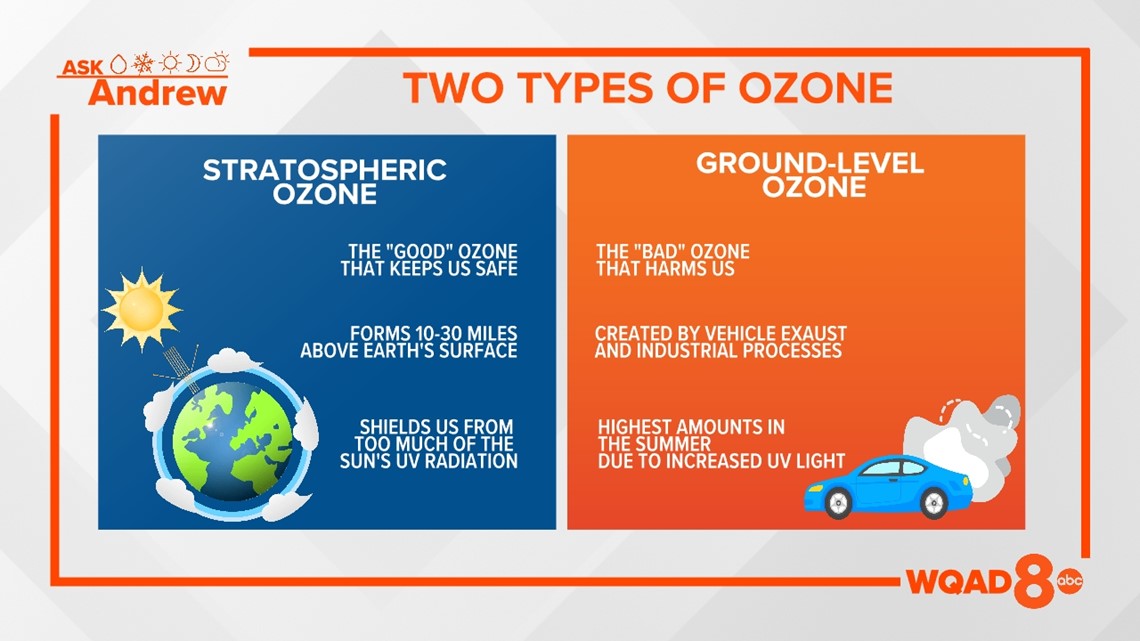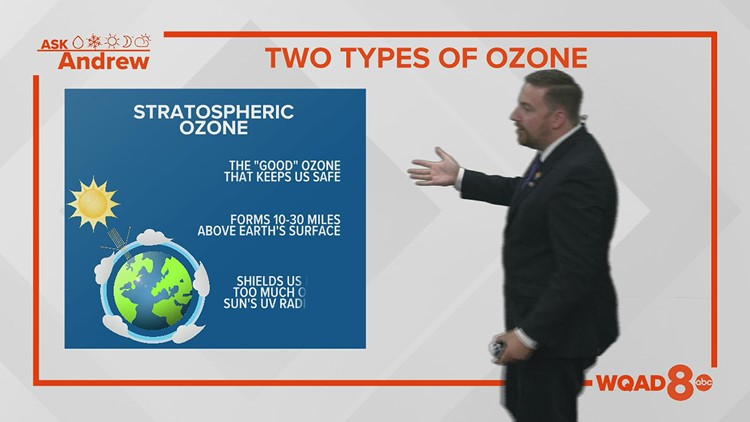MOLINE, Ill. — You've likely heard about the ozone layer at some point or another. But, did you know that there are two types of ozone? Let's dive in!
Ozone is formed when you pair three oxygen atoms in one molecule, creating O3. We are familiar with oxygen, O2. Ozone just adds another atom.
The beneficial ozone layer, located high up above the ground in the stratosphere, is the feature that keeps all of us from burning to a crisp. The stratospheric ozone forms a protective layer that shields us from the sun's harmful ultraviolet rays.
At times, this beneficial ozone layer has been partially destroyed and degraded by manmade chemicals. Recently, much of this damage has been repaired as the size of the holes is shrinking.


Ground-level ozone is the variant that has the greatest impact on our health. This type of ozone forms - you guessed it - near the ground thanks to ultraviolet radiation combining with chemical reactions between volatile organic compounds, also called VOCs. This occurs when pollutants, such as those emitted from vehicles, power plants, refineries and other sources, chemically react in the presence of sunlight.
A nationwide network of sensors continuously monitors air quality 24/7. Many urban areas, especially during the summer months, will have ozone action or alert days as levels reach unhealthy ranges.
While you can't see ozone, you can certainly smell it. People with asthma have the greatest risk of seeing side effects from breathing air containing ozone.
Elevated ozone levels can even damage plant life and other ecosystems including forests, parks and even crops. Ozone damages plants by entering openings in leaves and burning the plant tissue.
Have a question you would like me to answer for an upcoming "Ask Andrew" segment? Submit it, here!



